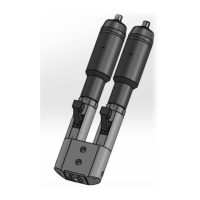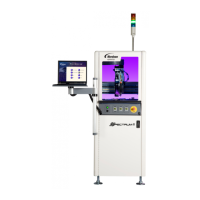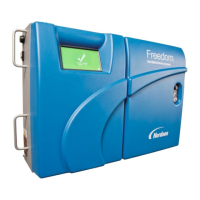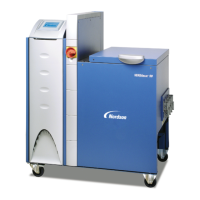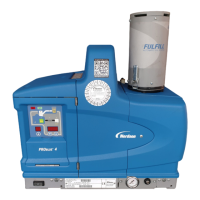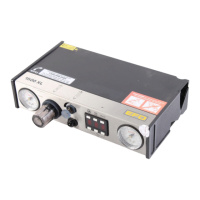4-22 Power-Up and Testing
To check vacuum for Contact Heaters:
WARNING! The heaters may be hot. Use caution when working in the area of the heaters or
serious burns may result.
" NOTES This procedure assumes the following:
• Sample workpieces are on the conveyor in the pre-dispense, dispense, and
post-dispense stations as applicable to your system configuration.
• The dispensing system hood is open.
• The FmXP Conveyer I/O Test Dialog Box is open.
1. Raise all lift tables as described in the previous procedure.
2. In the Conveyer I/O Test dialog box, (
Figure 4-13) locate the vacuum output buttons
(
Vac_Hold_Left, Vac_Hold_Ctr., etc.).
3. Activate the vacuum in each conveyor station by toggling the vacuum buttons
ON (1).
4. Test the vacuum for each heater by clicking on the vacuum button in each conveyor station
and trying to move the sample workpiece.
! The workpieces should not be easily moved off of the contact heaters.
5. Click on
OK in the Conveyer Test I/O dialog box to return to the Main Window.
6. Manually unload all of the sample workpieces.
To check overall Conveyor component operation:
1. Place a sample workpiece in the dispense station without activating the board sensor.
2. Close the dispensing system hood.
3. In the FmXP Main Window, click on
Teach a Program.
4. In the Programming Window, click on the
Load a Board icon .
5. Make sure that the stop pins, lift tables, and heater tooling function correctly during the
loading process as follows:
! The stop pins and lift tables should all raise and lower smoothly.
! The workpiece should contact the stop pins gently without bouncing off.
! The heater tooling should come on and go off at the proper times.
! If applicable, the contact heater vacuums should come on and go off at the proper times.
6. In the Programming Window, click on the
Unload a Board icon .
7. Make sure that the stop pins and lift tables all function correctly during the unloading
process.
" NOTE If the stop pins or lift tables do not function correctly, refer to Section 8 -
Troubleshooting.

